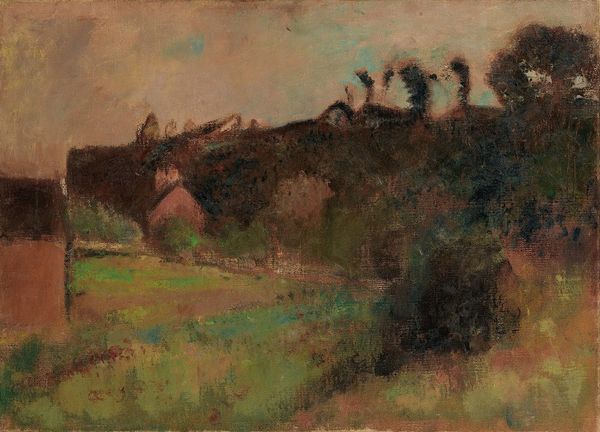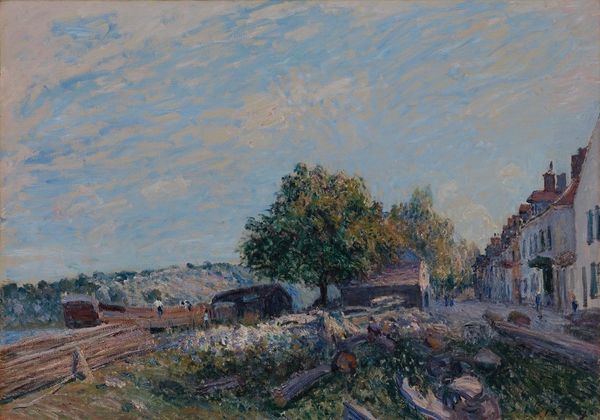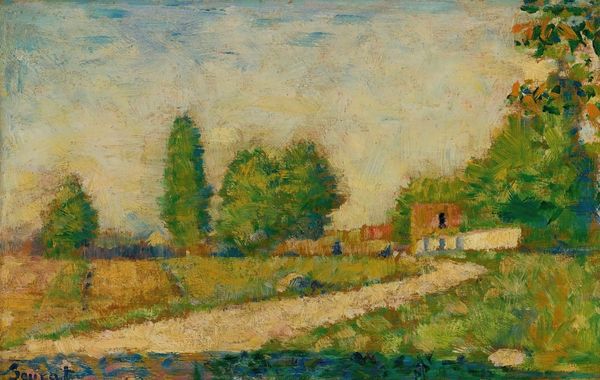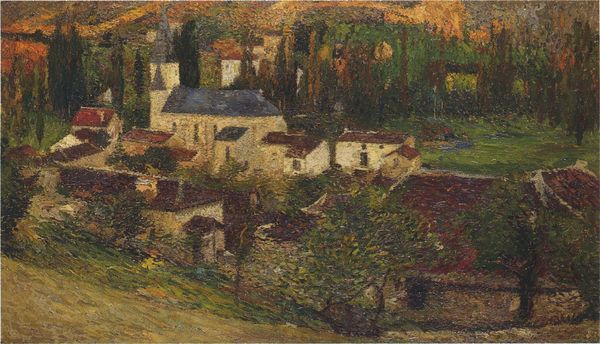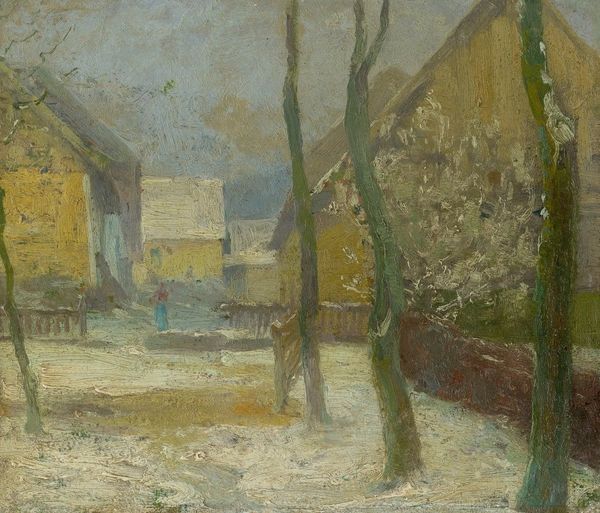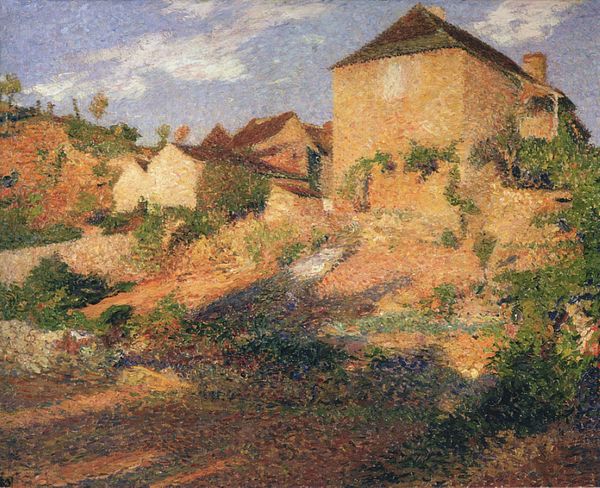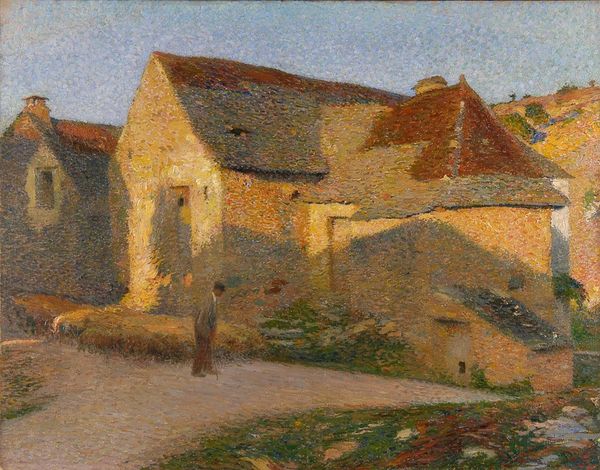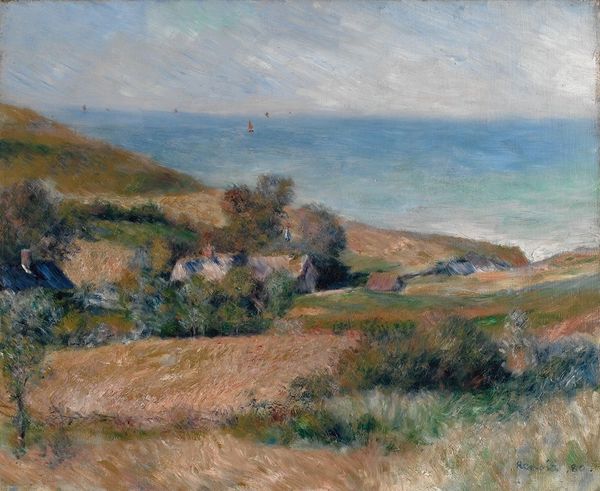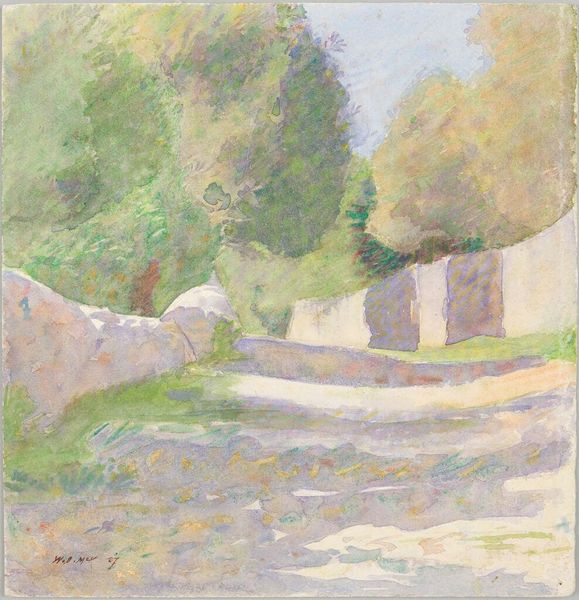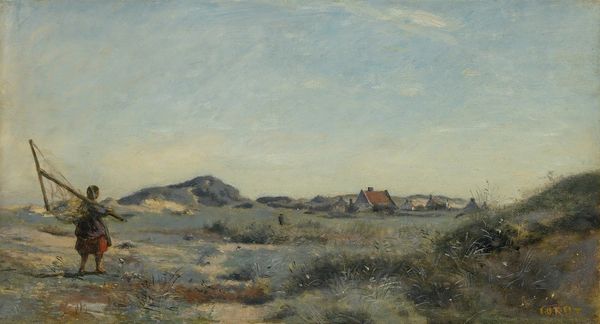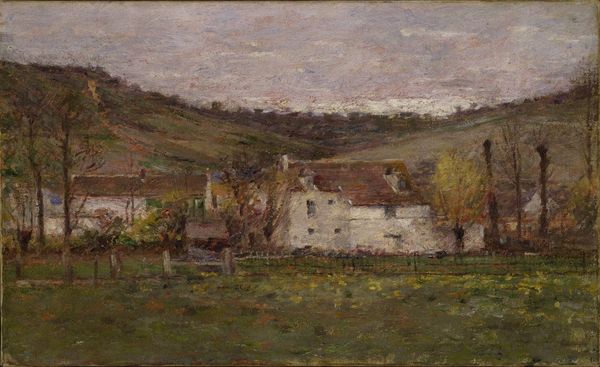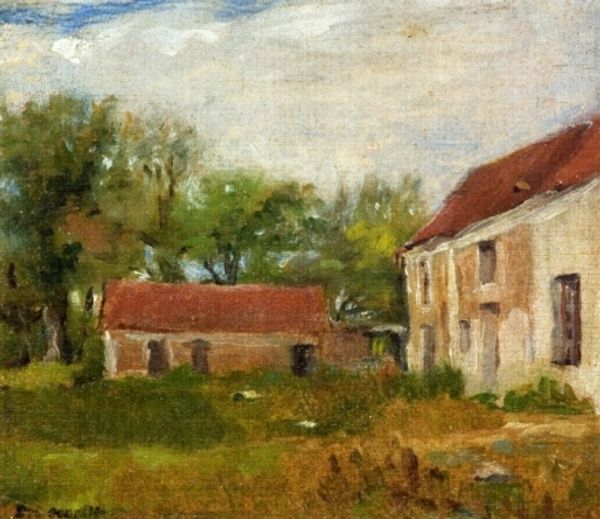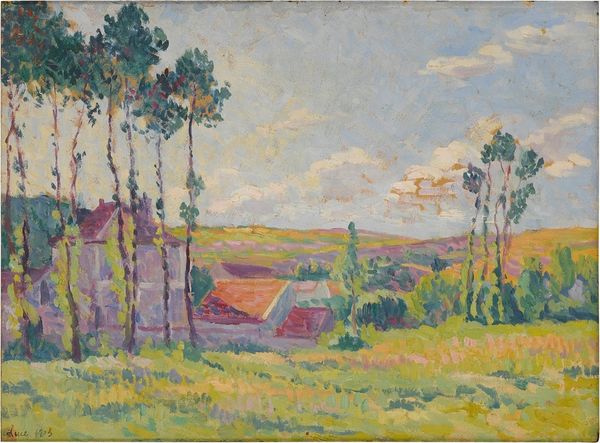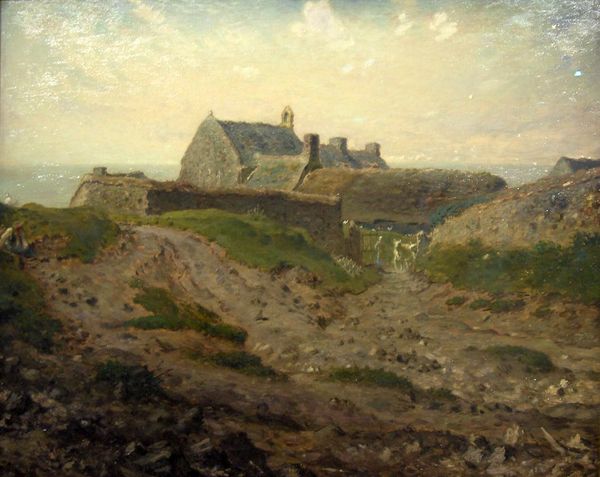
Copyright: Public Domain: Artvee
Curator: Standing before us is "Village," painted by Ľudovít Čordák between 1908 and 1910. It’s rendered in oil on canvas, offering a snapshot of rural life. What’s your immediate take on it? Editor: It feels…unfinished, almost? I'm struck by how the ochre and umber palette speaks to a laborious connection with the earth; you can almost feel the weight of the clay. Curator: Yes, and those muted tones definitely evoke a sense of quiet industry, a feeling of the village resting, waiting for something. The lack of sharp details suggests an intimacy – a place the artist knows well, almost too well. The landscape's worn canvas tells a story of slow-made permanence that’s echoed in the scene itself. Editor: The composition pulls me into thinking about material conditions. Look at how those thatched roofs blend almost seamlessly with the landscape, an undeniable connection with the source materials and labor to build them from their surroundings. I am keen to imagine how he was experimenting with layering and mixing to emulate textures through different tools to do so. It feels like we see the hands that make and made up the image itself. Curator: Absolutely! The loose brushwork makes everything seem so organic. The houses aren't imposing structures, but modest shelters blending with the landscape. This feels different than, say, a bustling industrial scene. Čordák uses his paint to show buildings almost sprouting from the earth itself. The choice to focus on a rustic existence makes me contemplate about sustainability then and its modern interpretations now. Editor: You know, the social dynamics here also intrigue me. Were those structures built collaboratively, shaping the socio-economic structures of that community? How might material availability influenced their artistic expression in shaping place. Even the pathway encourages questions to where were those paths and roads going to connect to nearby hubs that might have supplied the industrializing forces, creating more complexity of production for making it to even just painting this picture. Curator: Food for thought, indeed! It really speaks to a period where modern life was knocking on the door, yet these villages were holding onto traditions. It makes you wonder about Čordák's own relationship to this place. Editor: Definitely. Seeing the village from a historical perspective helps understand and bring to light all the different relations to materials from past that shaped not only artistically this piece, but a piece of our very modern consciousness and societal views of resource consumption and the arts.
Comments
No comments
Be the first to comment and join the conversation on the ultimate creative platform.
